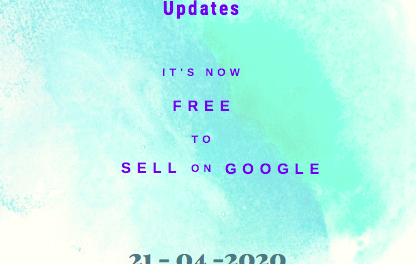Different Google Analytics Reports & Interpretation to improve PPC ROI
Before we get into the different Google Analytics reporting features, it’s important to go through the various important metrics that are connected with Google Analytics and learning them will surely helps us to interpret the data in a much better way than earlier. Here is a link to refer on Analytics Metrics; http://www.slideshare.net/ranjanraji/google-analytics-24539986
Also to start with, never conclude the performance of your campaigns, adgroups, keywords or adcopies by looking at one given Metrics for e.g., Visits, but adding other important metrics such as Bounce Rate, Time on Site, Revenue, Goal Completions, ROI, as then you get a holistic view of the performance decision.
Let’s start with important features of Google Analytics, and how they help in PPC performance;
- Real-Time Analytics
Until 2012, Google Analytics provided historic, day-old data. Google corrected that when it released “Real-Time”. In Real-Time, a user is active if he or she has triggered an event or page view within the past 5 minutes. Note that this is different from standard reports, in which a session is defined by a 30 min window. You can access the feature by log-in to GA tool and click “Home”, then “Real Time” followed by “Overview”
Real-Time features helps you in the following areas;
- Top Locations – From which geographical locations are they visiting your site
- New versus Returning – The number of new versus returning visitors
- Top Active Pages – Current pages the user is accessing, and how long
- Traffic sources – Visits from Referrals, Social Traffic along with Keywords, the users enter or found your site
- You can also view the performance, impact and navigational behaviour of an user, when launched with any current promotional activity via direct/search/social media/3rd party referral traffic/mobile
- If you don’t see any data, it’s possible that there are zero active visitors
- Audience -> Demographics -> Location
- Locations tabs identifies country/territory with highest visits
- Helps a PPC expert to create campaigns specifically targeting the potential country markets, if not yet
- Audience -> Mobile
- How did Desktop to Tablet to Mobile device perform in driving traffic to your site
- You would be able to know, from which Mobile Device, did the user try to access your website such as Apple Ipad, Apple iPhone, Samsung, ZTE Blade, SonyEricsson etc.,
- This interpretation helps to target your PPC campaigns specifically around those devices to increase ROI
- Traffic Sources -> Search -> Paid
- This report explains Visits, Visits Duration and Bounce Rate coming through paid keywords or campaigns around those keywords
- High % Bounce Rate (anything more than 60%) for a given keyword indicates, people just leave your website in few seconds by checking the initial/first page
- Traffic Sources -> Advertising -> Adwords
- Below is a screenshot of all sub-tabs specific to Adwords feature

- Here you can see Visits & Clicks Column both simultaneously. To know how are they different, follow this link; http://analytics.blogspot.in/2010/01/clicks-vs-visits-revisited.html
- Campaigns Tab explains, how each campaigns are performing not only w.r.t Clicks, Impression, CTR, CPC, Cost, Conversion, CR% and CPA, but also Bounce Rate, Goal Completions, Revenue, ROI to take a 360 degree approach in interpreting data and taking calculative decisions
- Bid Adjustments Tab displays the data in the below screenshot format. This helps to understand, how effective is your campaign w.r.t a given targeted device option

- Matched Search Queries Tab helps to identify queries that are typed by Users directly on the search engine interface in order to get connected with your website
- Day Part Tab helps to identify the best hours in a day, when your campaign drives maximum traffic, conversion or engagement with the user. Understanding this hours in a day, you can run campaigns much aggressive around those given hours. This a best strategy to put your PPC budget on the right hours to drive maximum ROI. Before you execute this step, rely on a 2-3 months data than to just few days

- Destination URLs Tab helps to identify URLs with best performance not just in terms of Visits, but also Bounce Rate, Goal Completions & Revenue.
- Placements Tab helps to identify those Display Network targeted sites that perform well for your given keywords/campaigns. You can also use the Google Ad Planner tool to find different relevant sites for your ads to display.
- Keyword Positions Tab is a fantastic tool to figure out, the different ad positions displaying that acquired clicks for each keywords. Check the screenshot;

- Below is a screenshot of all sub-tabs specific to Adwords feature
- Content -> Site Content -> All Pages
- Identify landing pages performance w.r.t PageViews, Time on Site, Entrance, Bounce Rate & % Exit
- Entrance metrics helps you to understand how many user entered first through this page
- % Exit explains how many user left the site after dropping at this page during their course of journey on a given website
- Data from this report helps you to identify, which landing pages are doing good so that you can effectively target those pages through SEM campaigns
- Navigation Summary Tab is also a beautiful feature to help you understand what pages did user view before landing on a particular page, and the landing page they left from the current page (Here “/” being the Home Page)

- Content -> In-Page Analytics
- Conversions -> Goals









Add Comment